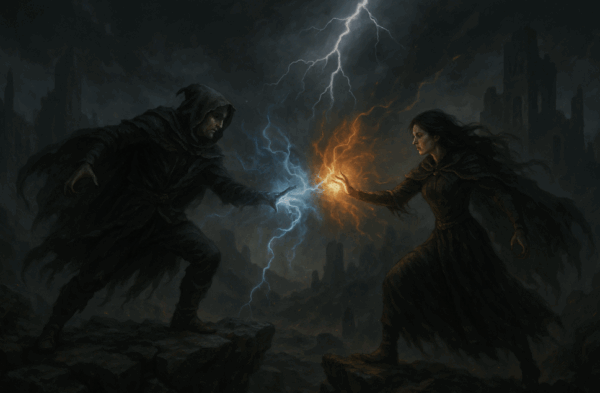Balancing fact and fiction in historical writing is a delicate art that requires careful attention to detail and a deep understanding of both history and storytelling. The importance of this balance cannot be overstated, as it allows writers to create narratives that are both engaging and educational. Historical fiction captivates readers by seamlessly blending real events with creative narratives, offering a window into the past while also providing the excitement of fiction. This genre has the unique ability to bring history to life, making it accessible and relatable to modern readers.
Key to this process are several essential concepts: historical novel, which serves as the bridge between documented history and imaginative storytelling; historical facts, which provide the foundation of authenticity; and creative liberties, which allow authors the freedom to fill gaps and enhance the narrative. By skillfully intertwining these elements, historical fiction writers can craft compelling stories that resonate with readers, offering both entertainment and insight into different historical periods.
In this article, we will explore the nuances of writing historical fiction, discussing how to achieve the right balance between fact and fiction. We will delve into the techniques used by successful writers to ensure historical accuracy while maintaining a captivating storyline, ensuring that the past is both accurately represented and vividly brought to life.
Overview
Balancing fact and fiction in historical writing is key to creating compelling and authentic narratives. Here’s how you can achieve it:
- Blend Real Events with Fiction: Seamlessly integrate historical facts with creative storytelling to craft engaging narratives.
- Conduct Thorough Research: Immerse yourself in historical sources to ensure accuracy and authenticity.
- Venture into the Real World: While writing fiction based on facts, visit galleries, and museums, and talk to people to gather material for creating authentic characters and settings in historical fiction.
- Develop Authentic Characters: Create multi-dimensional characters that reflect their historical context while resonating with modern readers.
- Describe Vivid Settings: Use sensory details to bring historical settings and everyday life to life.
- Respect Historical Facts: Maintain accuracy for significant events and figures while using creative liberties to enhance the story.
- Address Challenges: Avoid anachronisms and keep the reader interested with careful research and imaginative problem-solving.
- Refine Through Revisions: Use iterative revisions and feedback from critique partners to perfect the balance of fact and fiction.
By following these guidelines, writers can produce historical fiction that captivates readers and provides a rich, immersive experience of the past.
Understanding Historical Fiction
Historical fiction is a literary genre that bridges the gap between history and literature, creating a unique narrative space where factual events and imaginative storytelling coexist. By definition, historical fiction involves stories set in the past, often featuring real historical events and figures, but with added fictional elements to enhance the narrative and engage readers. This genre allows writers to explore historical periods in depth, offering new perspectives and insights while maintaining an entertaining storyline.
The role of historical accuracy versus creative freedom in writing historical fiction is a delicate balance. Historical accuracy provides the authenticity that anchors the narrative in a specific time and place, ensuring that the story feels real and believable. Creative freedom, on the other hand, allows writers to invent characters, dialogues, and subplots that enrich the main narrative and make the historical period come alive. This creative liberty is essential for filling in the gaps where historical records may be sparse or non-existent, adding depth and emotional resonance to the story. In historical novels, this balance is crucial to creating compelling and authentic fictional stories set in the past.
Thorough research and attention to historical details are crucial in creating authentic narratives. Writers must delve into primary and secondary sources, including historical documents, books, and scholarly articles, to build a solid foundation of knowledge about the period they are portraying. Accurate historical details—such as clothing, language, customs, and social norms—add layers of realism to the story, helping readers immerse themselves in the past. By combining meticulous research with creative storytelling, historical fiction writers can craft compelling narratives that both educate and entertain.
The Craft of Writing Historical Fiction
Writing historical fiction involves a series of well-defined steps, beginning with the selection of a historical period. Choosing the right era is crucial, as it sets the backdrop for the entire narrative. Writers should pick a period that fascinates them and has ample resources available for research. Historical novels thrive on this foundation, as accurate historical research is essential for creating compelling and authentic stories set in the past. Once the era is chosen, the next step is to develop a compelling storyline that weaves together real historical events and fictional elements.
Balancing real events with fictional characters and plotlines is vital in historical fiction. This balance ensures that the narrative remains engaging while preserving historical authenticity. Real events provide a solid framework and anchor the story in reality, while fictional characters and plots offer creative freedom, allowing writers to explore themes, emotions, and experiences that may not be fully documented in historical records.
Historical context and societal norms play a significant role in shaping narratives. Understanding the social, political, and cultural milieu of the chosen period helps writers create believable and relatable characters. This context influences character motivations, interactions, and conflicts, making the story more immersive for readers. It’s essential to accurately portray societal norms, as deviations can disrupt the narrative’s credibility.
Integrating historical figures and everyday life details enhances the authenticity of the story. Writers can include well-known historical figures as secondary characters or even protagonists, ensuring they remain true to their documented behaviors and actions. Everyday life details, such as clothing, food, language, and customs, add richness and depth to the narrative, making the historical setting come alive. These elements help readers feel as though they are experiencing history firsthand.
By following these steps and carefully balancing historical accuracy with creative storytelling, writers can craft historical fiction that is both engaging and educational, transporting readers to different times and places with vivid, authentic narratives.
Developing Authentic Characters and Settings
Creating authentic characters that resonate with modern readers is essential in historical fiction. When writing fiction, especially historical fiction, writers should develop multi-dimensional characters with relatable emotions, motivations, and conflicts, regardless of the historical period. It’s important to balance historical accuracy with universal human experiences, making characters feel both true to their time and accessible to contemporary readers.
Language nuances and societal norms are crucial in character development. Characters should speak and behave in ways that reflect their historical context. This includes using period-appropriate language, idioms, and dialects while avoiding anachronisms that can break immersion. Understanding societal norms, such as gender roles, class distinctions, and cultural values, helps shape authentic interactions and character dynamics.
To vividly describe historical settings and everyday life, writers should employ sensory details that paint a comprehensive picture of the past. Techniques include:
- Visual Descriptions: Use rich, specific details to describe architecture, clothing, and landscapes. For instance, instead of saying a character walked into a market, describe the vibrant colors of the stalls, the scent of fresh bread, and the sound of merchants haggling.
- Sensory Experiences: Incorporate all five senses to create immersive scenes. Describe the taste of food, the texture of fabrics, the smell of streets, and the sounds of daily activities.
- Cultural Context: Highlight customs, rituals, and routines that define the era. This can include festival celebrations, religious practices, and typical household chores, providing readers with a window into everyday life.
By focusing on authentic character development and vivid setting descriptions, historical fiction writers can create rich, engaging narratives that transport readers to different times and places.
Balancing Historical Accuracy with Creative Liberties
Balancing historical accuracy with creative liberties is a fundamental challenge in writing a historical novel. To maintain accuracy without compromising the story’s flow, writers can adopt several strategies:
- Prioritize Key Facts: Focus on major historical events and ensure their accurate representation. Minor details can be adjusted for narrative purposes as long as they don’t alter the fundamental truths of the period.
- Blend Fiction with Reality: Seamlessly integrate fictional characters and plotlines into real historical contexts. This involves creating fictional protagonists who interact with real historical figures and events in plausible ways.
- Use Historical Frameworks: Structure the narrative around significant historical milestones, using them as anchors. This allows the story to flow naturally while remaining grounded in factual events.
Successful historical fiction writers expertly balance fact and fiction. For instance, Hilary Mantel’s “Wolf Hall” series portrays the life of Thomas Cromwell with meticulous historical detail while adding depth through fictionalized personal interactions and inner monologues. Similarly, Ken Follett’s “The Pillars of the Earth” intricately weaves fictional characters’ lives into the construction of a medieval cathedral, blending accurate historical backdrop with engaging personal stories.
Critique partners and thorough research play crucial roles in achieving the right balance. Critique partners, especially those knowledgeable about the historical period, can provide valuable feedback on the authenticity of the narrative and point out anachronisms or inaccuracies. They help ensure that the story remains compelling without sacrificing historical integrity.
Research is the foundation of credible historical fiction. Writers should immerse themselves in primary sources, such as letters, diaries, and official documents, as well as secondary sources, including scholarly articles and historical analyses. This extensive research informs the narrative, providing a rich tapestry of historical details that enhance the story’s realism.
By employing these strategies and leveraging the insights of critique partners and extensive research, writers can skillfully balance historical accuracy with creative liberties, crafting narratives that are both historically faithful and captivatingly imaginative.
The Role of Historical Events and Figures
Incorporating historical events and figures into a narrative enriches historical novels by providing a solid foundation of authenticity and engaging readers with recognizable touchpoints. To effectively integrate these elements, writers should weave real events and figures seamlessly into the storyline. This can be achieved by having fictional characters interact with historical figures or by placing personal dramas against the backdrop of significant historical events. Such interactions and settings should feel natural and contribute to the overall plot, rather than serving as mere historical showcases.
Respecting historical facts is paramount in creating engaging storylines. While it’s tempting to bend events for dramatic effect, doing so can undermine the story’s credibility. Writers should strive to portray historical figures accurately, reflecting their documented actions, personalities, and motivations. Any deviations from known facts should be carefully considered and clearly justified within the narrative. This approach ensures that the story remains respectful of history while still allowing for creative expression.
Balancing real events with fictional plots enhances the narrative’s appeal. Historical events can serve as catalysts for fictional conflicts and character development. For example, a well-known battle or political upheaval can provide a dramatic backdrop for personal stories of love, loss, and bravery. This blend of reality and fiction creates a rich, layered narrative that resonates with readers. Fictional plots should complement and illuminate the historical context, adding depth and emotional engagement to the factual framework.
By thoughtfully incorporating historical events and figures, respecting historical facts, and balancing these elements with fictional plots, writers can create compelling historical fiction that captivates readers and offers a vivid exploration of the past.
Challenges and Solutions in Historical Writing
Historical fiction writers face several common challenges, including avoiding anachronisms and maintaining reader interest. When writing fiction, especially historical fiction, anachronisms—elements that are out of place in time—can disrupt the narrative’s authenticity and jar readers out of the story. Maintaining reader interest is equally critical, as historical fiction must balance informative content with engaging storytelling to keep readers invested.
To address these challenges, thorough research is essential. Writers should immerse themselves in the time period they are depicting, studying primary sources such as letters, diaries, and artifacts, as well as secondary sources like history books and scholarly articles. This depth of knowledge helps prevent anachronisms and ensures that the story’s details are accurate and believable.
Creative problem-solving is another key strategy. When historical records are sparse, writers can use their imagination to fill in gaps while staying true to the spirit of the period. For instance, fictional characters can experience everyday life and societal norms, providing a rich backdrop that enhances the historical setting without distorting facts.
The first draft is a crucial step in the writing process, allowing writers to explore and experiment with the balance of fact and fiction. Iterative revisions are equally important, offering opportunities to refine the narrative, correct inaccuracies, and strengthen character development and plot cohesion. Engaging critique partners can provide valuable feedback, helping writers identify and resolve potential issues early in the revision process.
By combining thorough research, creative problem-solving, and a diligent revision process, historical fiction writers can overcome common challenges, creating compelling and authentic narratives that captivate readers and bring history to
Conclusion: Balancing Fact and Fiction
Balancing fact and fiction in historical writing is a nuanced art that requires meticulous research, creative storytelling, and a deep understanding of historical context. Throughout this article, we have explored the significance of this balance, emphasizing the importance of maintaining historical accuracy while weaving engaging narratives. We discussed the vital role of authentic characters and settings in making historical fiction resonate with modern readers and highlighted the need for detailed historical context to bring the past vividly to life.
We also delved into strategies for integrating historical events and figures into stories, ensuring they enhance rather than overshadow the fictional elements. By respecting historical facts and thoughtfully balancing them with creative liberties, writers can create rich, immersive narratives that captivate readers and provide insightful perspectives on different eras.
Well-crafted historical fiction has a profound impact on readers, offering them a unique blend of education and entertainment. It allows readers to experience history in a personal and emotional way, fostering a deeper connection to the past. This genre also contributes significantly to literature by expanding our understanding of historical events and figures through the lens of human experiences and emotions.
As we conclude, we encourage writers to continue exploring and refining their craft. Achieving the perfect balance between fact and fiction is an ongoing process that involves continual learning and experimentation. By dedicating themselves to thorough research and creative storytelling, writers can produce historical fiction that not only engages and entertains but also enriches our appreciation of history and its lasting impact on the present.
Interested in reading more on the topic of fiction? Click here to read all about attracting your audience through cover designs.
Have you completed your manuscript and are ready to share it with the world? Spines stands as your gateway to the publishing realm, embodying the future of publishing. Our AI-powered platform is designed to revolutionize your publishing journey, offering a suite of comprehensive services. These include detailed editing and proofreading, captivating cover creation, seamless distribution, and strategic marketing across various channels and platforms. With Spines, your book is not only set to transcend the ordinary but also to make a significant impact in the new era of publishing. Sign up for free to start your self-publishing journey.







